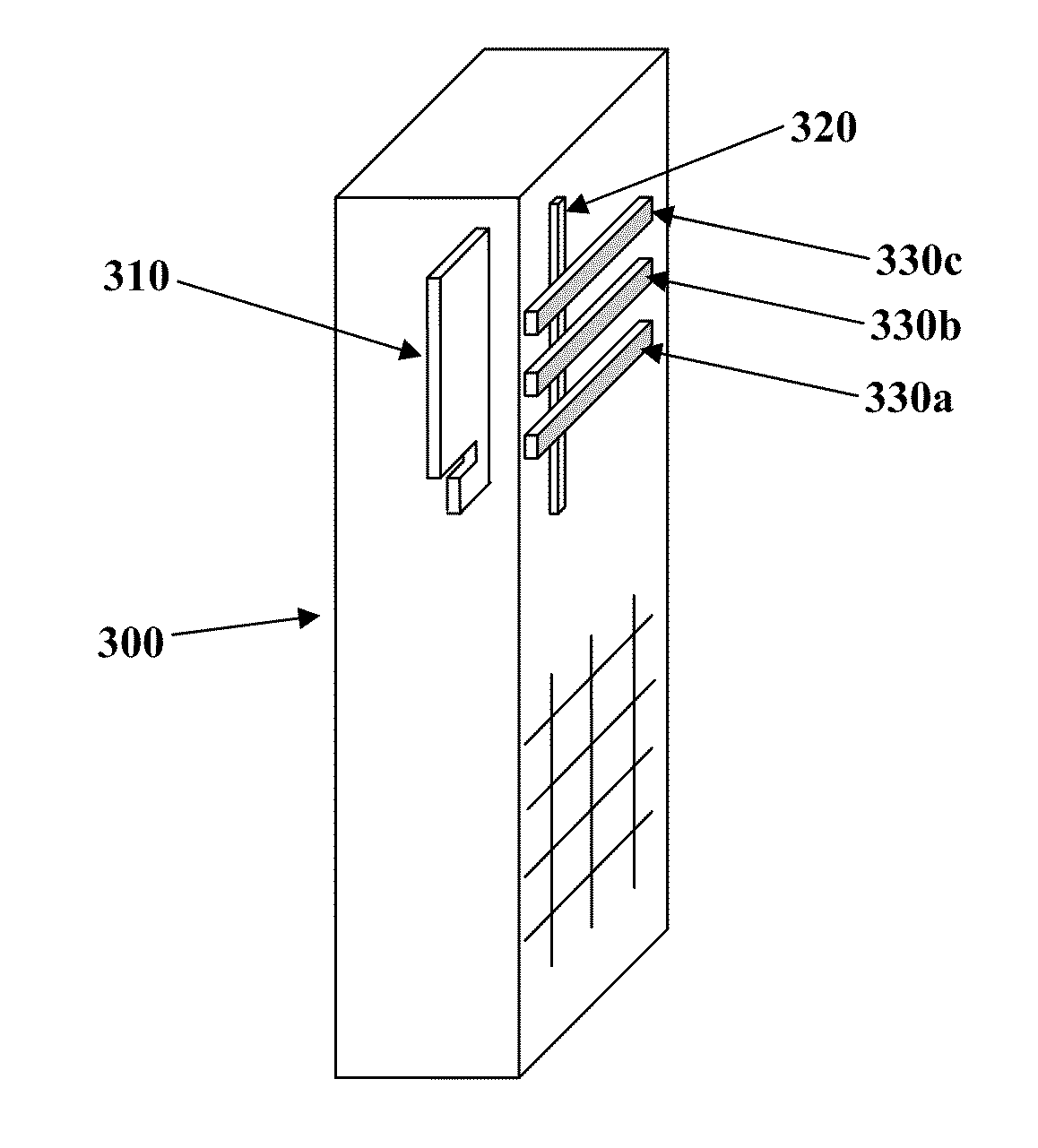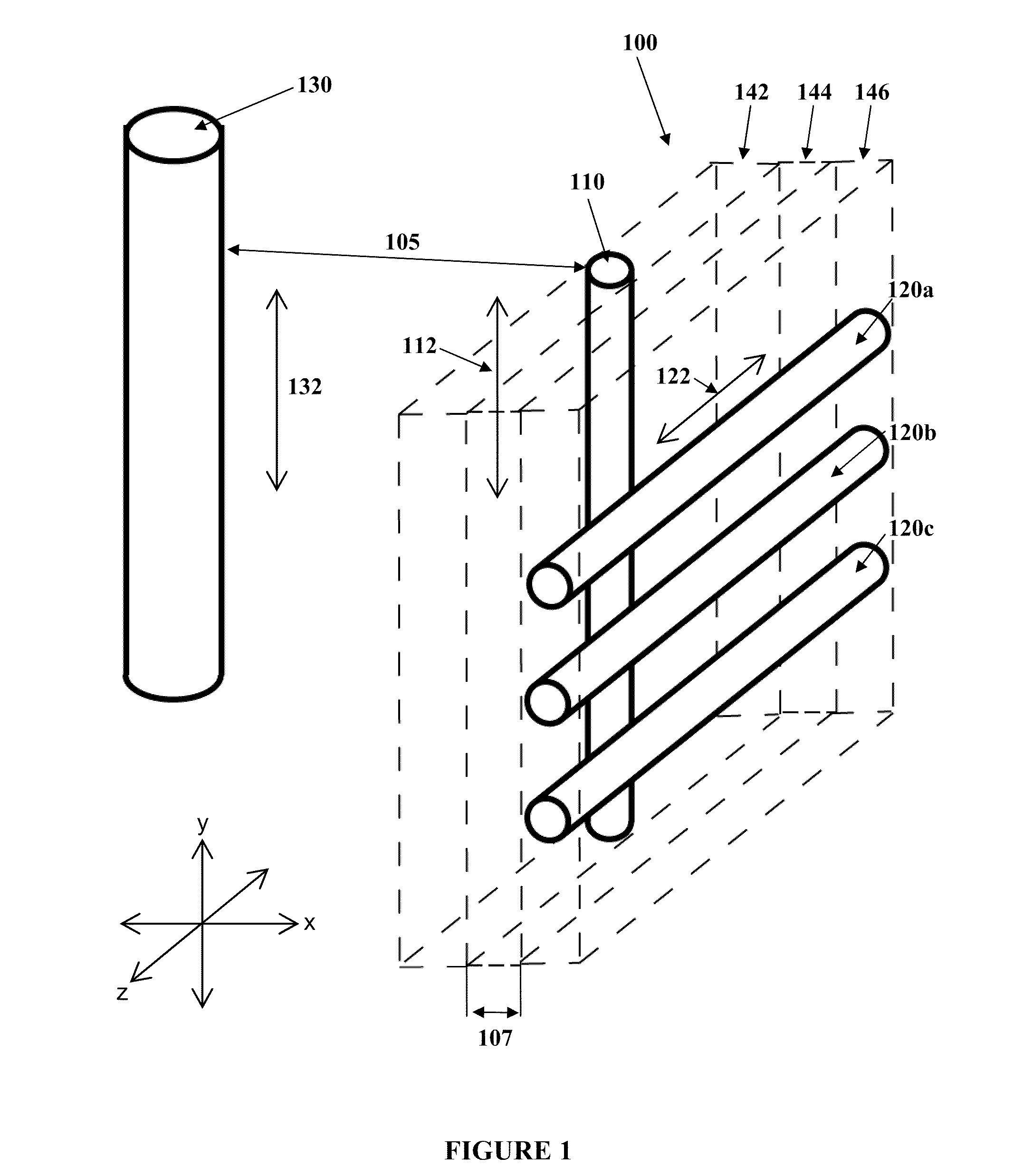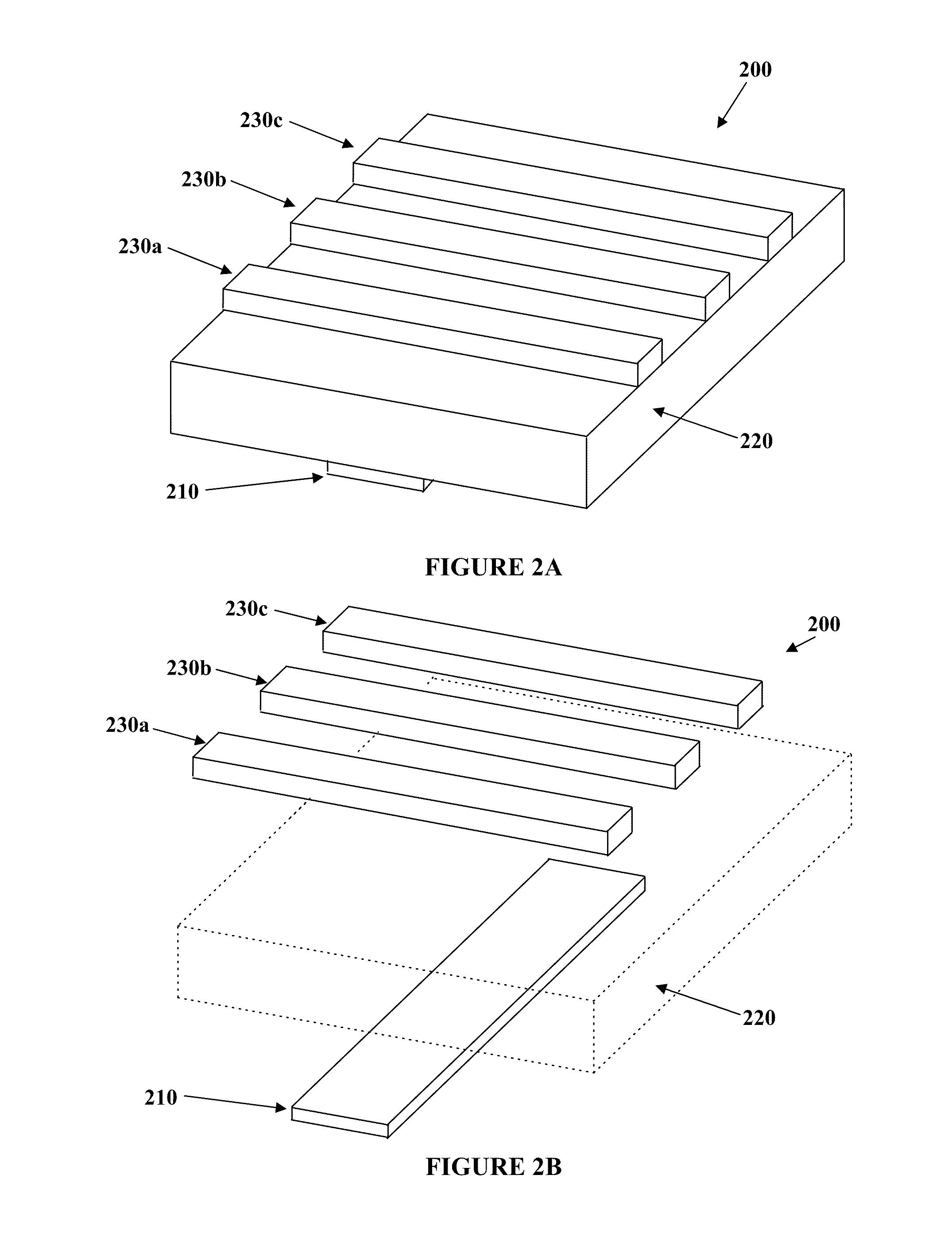Mitigation of undesired electromagnetic radiation using passive elements
a technology of electromagnetic radiation and passive elements, applied in the direction of antennas, antenna details, antenna couplings, etc., can solve the problems of undesired negative effects of device transmitter operation, radiation emitted by such transmitters may pose a health risk to the user or other persons sufficiently close to the transmitter, radiation may interfere with the operation of nearby electronics or communication devices, etc., to achieve the effect of reducing undesired electromagnetic radiation
- Summary
- Abstract
- Description
- Claims
- Application Information
AI Technical Summary
Benefits of technology
Problems solved by technology
Method used
Image
Examples
example 1
[0093]FIGS. 2A and 2B illustrate an apparatus 200 for mitigating undesired portions of electromagnetic radiation associated with an antenna in accordance with an embodiment of the present invention. FIG. 2B is an exploded view of FIG. 2A. The apparatus 200 comprises a coupler 210, an intermediate layer of insulating or dielectric material 220 and a plurality of dissipaters 230a, 230b, 230c. The coupler 210 is coupled to a first side of the intermediate layer 220, while the dissipaters 230a, 230b, 230c are coupled to a second side of the intermediate layer 220 opposite the first side.
[0094]The coupler 210 is a substantially rectangular strip of conductive material, such as copper, thin flexible conductor, or the like. The coupler 210 may be bonded to the intermediate layer 220, etched or deposited onto the surface of the intermediate layer 220, or formed in a layer of material coupled to the intermediate layer 220.
[0095]The intermediate layer 220 has a thickness T, configured to sepa...
example 2
[0099]FIG. 3 illustrates a communication device 300 configured for mitigating undesired portions of electromagnetic radiation associated with an antenna 310 internal thereto in accordance with an embodiment of the present invention. The communication device 300 comprises a coupler 320, such as a strip of conductive material, which is substantially co-polarized with the antenna 310. The coupler is separated from the antenna 310 by a predetermined distance. The communication device further comprises a plurality of dissipaters 330a, 330b, 330c, each of which is substantially differently polarized from the antenna 310.
[0100]The communication device 300 may be a cellular telephone, wireless adapter, machine-type wireless communication device, or other wireless device, as would be readily understood by a worker skilled in the art.
[0101]The coupler 320 and dissipaters 330a, 330b, 330c may be integrally formed with the communication device 300, or attached thereto by soldering, adhesive, fa...
example 3
[0102]FIG. 4 illustrates an apparatus 400 for mitigating undesired portions of electromagnetic radiation associated with an antenna in accordance with an embodiment of the present invention. The apparatus 400 is mounted on a housing 410 for example of a communication device. The housing 410 contains an antenna (not shown) which is associated with a hotspot 415. The apparatus 400 is located within the hotspot 415, and configured to mitigate the hotspot.
[0103]As illustrated in FIG. 4, the apparatus 400 comprises two couplers 420, 425, substantially co-polarized with the antenna and EM inductively coupled thereto. The apparatus further comprises dissipaters 440a, 440b, 440c, 440d, 440e EM inductively coupled to coupler 420, and dissipaters 445a, 445b, 445c, 445d, 445e EM inductively coupled to coupler 425. The dissipaters are substantially cross-polarized with the antenna. The apparatus further comprises an insulating or dielectric layer 430 or air gap between the couplers and dissipat...
PUM
 Login to View More
Login to View More Abstract
Description
Claims
Application Information
 Login to View More
Login to View More - R&D
- Intellectual Property
- Life Sciences
- Materials
- Tech Scout
- Unparalleled Data Quality
- Higher Quality Content
- 60% Fewer Hallucinations
Browse by: Latest US Patents, China's latest patents, Technical Efficacy Thesaurus, Application Domain, Technology Topic, Popular Technical Reports.
© 2025 PatSnap. All rights reserved.Legal|Privacy policy|Modern Slavery Act Transparency Statement|Sitemap|About US| Contact US: help@patsnap.com



